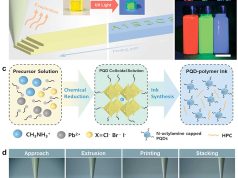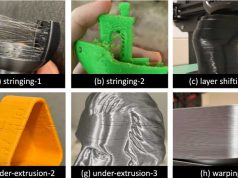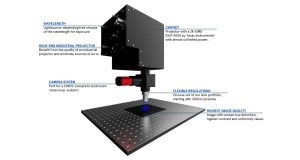Additive manufacturing makes the impossible possible. It is also changing the way the next generation of innovators will design and manufacture the products of tomorrow. The rapidly growing successes in 3D printing for space-related applications (e.g. NASA’s RAMFIRE program) have inspired a team of fifty enthusiastic students from Purdue University‘s Active Controls team to optimize the benefits of AM to improve vertical takeoff and landing (VTVL) technology.
Pavit Hooda, project manager and co-founder of PSP-AC, emphasizes: “This team operates under a greater vision to prepare the current and future classes of engineers to be more attuned to the current technological trends in space exploration.”
To produce a thrust chamber that meets these demanding specifications with complex geometries and tolerances, PSP-AC chose Elementum 3D to laser powder bed fusion print the aluminum combustion chamber, cooling circuit and nozzle as a single part.
“We are honored to offer our team’s AM knowledge, expertise, and technology to inspire all the students involved in the Purdue Space Program to push the limits of conventional thinking and print the first ever A6061-RAM2 thrust chamber assembly,” said Dr. Jacob Nuechterlein, Elementum 3D founder and president.
With a chamber pressure of 250 psi and a thrust rating of 550 lbf, PSP-AC determined that Elementum 3D’s advanced RAM technology was necessary to realize the project. The A6061-RAM2 aluminum alloy material provides the required properties for TADPOLE’s operating conditions and allows for a longer thrust chamber life, allowing for additional testing in the test program.
Aluminum was chosen for its excellent thermal properties, light weight and low cost. In contrast to other AM aluminum powders, A6061-RAM2 has a very smooth surface, which favors heat transfer.
A further step was the post-processing and de-powdering of the internal channels, with the team working closely with Elementum 3D engineers to develop workable solutions. This collaboration allowed PSP-AC to obtain detailed information about the alloy’s material properties, which was critical to understanding and modeling the performance of the thrust chamber.
“The whole process is a great engineering challenge and learning experience that was made possible by Elementum 3D’s support. PSP-AC will use these simulations and experimental results to design their next engine,” said Andrew Radulovich, PSP-AC chief engineer.
The simulations and experimental results obtained will be incorporated into the development of the next propulsion system, underlining the importance of the partnership. The support for the PSP-AC team goes far beyond the promotion of space technology and strengthens confidence in the reliability and repeatability of additive manufacturing.
Subscribe to our Newsletter
3DPresso is a weekly newsletter that links to the most exciting global stories from the 3D printing and additive manufacturing industry.
























